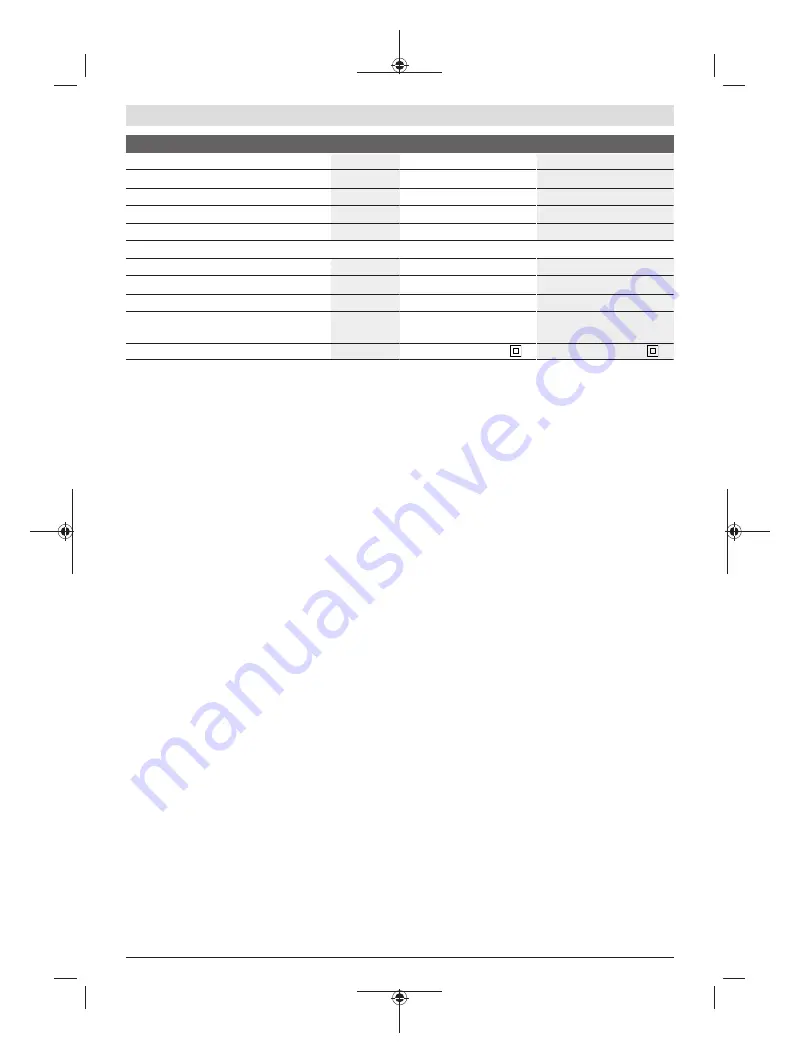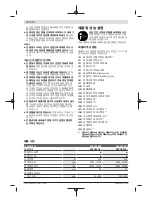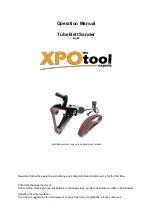
8
| English
1 609 92A 4JA | (18.07.2018)
Bosch Power Tools
Orbital sander
GSS 230 AVE
GSS 280 AVE
Orbital stroke rate preselection
●
●
Rated power input
W
300
350
No-load speed
rpm
8000–11000
8000–11000
No-load orbital stroke rate
rpm
16000–22000
16000–22000
Orbit diameter
mm
2.4
2.4
Sanding sheet dimensions
– Hook-and-loop backing
mm
93 x 185
115 x 230
– Clamping tension
mm
93 x 230
115 x 280
Sanding plate dimensions
mm
92 x 182
114 x 226
Weight according to EPTA-Procedure
01:2014
kg
2.5
2.8
Protection class
/ II
/ II
The specifications apply to a rated voltage [U] of 230 V. These specifications may vary at different voltages and in country-specific models.
Assembly
u
Pull the plug out of the socket before carrying out any
work on the power tool.
Dust/chip extraction
The dust from materials such as lead paint, some types of
wood, minerals and metal can be harmful to human health.
Touching or breathing in this dust can trigger allergic reac-
tions and/or cause respiratory illnesses in the user or in
people in the near vicinity.
Certain dusts, such as oak or beech dust, are classified as
carcinogenic, especially in conjunction with wood treatment
additives (chromate, wood preservative). Materials contain-
ing asbestos may only be machined by specialists.
– Use a dust extraction system that is suitable for the ma-
terial wherever possible.
– Provide good ventilation at the workplace.
– It is advisable to wear a P2 filter class breathing mask.
The regulations on the material being machined that apply in
the country of use must be observed.
u
Avoid dust accumulation at the workplace.
Dust can
easily ignite.
Self-generated dust extraction with dust box
(see figures I–M)
Slide the dust box
(7)
onto the extraction outlet
(22)
. Turn
the dust box in such a manner that its recesses face against
the tips on the extraction outlet and the dust box can be felt
to engage.
You can easily check the filling level of the dust box
(7)
through the transparent container.
To empty the dust box
(7)
, rotate slightly and pull it back.
Unscrew the filter element
(6)
and pull it out of the dust box
(7)
. Empty the dust box.
Gently tap the filter element
(6)
against a solid surface to
loosen the dust. Use a soft brush to clean the flaps of the fil-
ter element
(6)
.
Note:
In order to ensure optimum dust extraction, empty the
dust box
(7)
in good time and clean the filter element
(6)
regularly.
When working on vertical surfaces, hold the power tool with
the dust box
(7)
facing downwards.
External dust extraction (see figure N)
Fit a dust extraction hose
(23)
onto the extraction outlet
(22)
. Mount the vacuum hose onto the extraction outlet (as
shown in the figure) in such a manner that the lateral open-
ings on the extraction outlet remain free. This prevents the
power tool from adhering to the workpiece during sanding
and the surface quality of the workpiece from being im-
paired.
Connect the dust extraction hose
(23)
to an extractor. You
will find an overview of connecting to various dust extractors
at the end of these operating instructions.
The dust extractor must be suitable for the material being
worked.
When extracting dry dust that is especially detrimental to
health or carcinogenic, use a special dust extractor.
When working on vertical surfaces, hold the power tool with
the dust extraction hose facing downwards.
Changing the sanding sheet
Remove dirt and dust from the sanding plate
(10)
, e.g. with
a brush, before attaching a new sanding sheet.
To ensure optimum dust extraction, make sure that the
punched holes in the sanding sheet are aligned with the
drilled holes in the sanding plate.
Sanding sheets with hook-and-loop backing
(see figure E)
The sanding plate
(10)
is fitted with a hook-and-loop fasten-
ing, allowing sanding sheets with a similar backing to be se-
cured quickly and easily.
Tap the hook-and-loop fastening of the sanding plate
(10)
before fitting the sanding sheet
(14)
to facilitate maximum
adhesion.









































